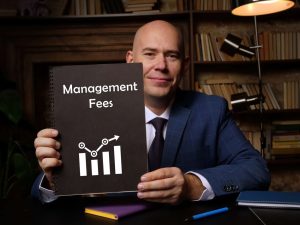
While this signals a negative cash flow from investing activities in the short term, it may help the company generate cash flow in the longer term. A company may also choose to invest cash in short-term marketable securities to help boost profit. The cash flow statement bridges the gap between the income statement and the balance sheet by showing how much cash is generated or spent on operating, investing, and financing activities for a specific period. When a medium other than cash is used to acquire an asset, we call it a non-cash investing activity. When we prepare a statement of cash flows, we are concerned only with cash transactions. The significant non-cash investing activities are, however, disclosed in the footnotes under the caption “non-cash investing and financing activities”.
Capital Expenditures (CapEx)
This remains the case, even if your business has sold an investment at a price lower than its purchasing price, hence incurring a loss. This is because you would still be receiving cash in exchange for your sale, which will hence lead to an increase in your cash flow. Until now, we have seen three companies in three different industries and how cash means different things for them. For the service company, it is a way to run a business; for a bank, it is all about cash.
How can individual investors benefit from understanding investing activities?
- By making informed investment decisions, companies and individuals can enhance their financial stability and profitability over time.
- Investing cash flows can be analyzed through the lens of the statement of cash flows, which divides cash flow into operating, investing, and financing activities.
- You can use a block-stacking activity to teach your kids how compound interest works.
- This is categorized under cash flows from investing activities in the cash flow statement.
- Together, they provide a comprehensive picture of the business’s financial health, but they do so from different perspectives regarding time and strategic focus.
- Let us understand the concept and cash flow from investing activities format with the help of some suitable examples.
He is an expert on personal finance, corporate finance and real estate and has assisted thousands of clients in meeting their financial goals over his career. It’s also important to point out that the purchase of PP&E (CapEx) has been fairly proportional to depreciation, which indicates the company is consistently reinvesting to keep its assets in good shape. Flashcards can also introduce the concept of thoughtful financial decision-making to young kids, according to Miller.

Investing Activities and Reporting it on Cash Flow Statement
Investing cash flows can be analyzed through the lens of the statement of cash flows, which divides cash flow into operating, investing, and financing activities. The cash flow statement is one of the three financial reports that a company generates in an accounting period. One of the sections of the cash flow statement is cash flow from investing activities. These can either be positive (cash generated by sales of investment securities or assets) or negative (cash spent on long-term assets, lending, or marketable securities). Cash flow from investing activities is important because it shows how a company is allocating cash for the long term. For instance, a company may invest in fixed assets such as property, plant, and equipment to grow the business.
- Cash receipts obtained from disposal of the debt instruments of other business entities.
- For example, cash proceeds from the issuance of capital stock or debt instruments like notes or bonds payable, cash payments for dividend distributions, purchase of treasury stock, etc.
- Operating activities include revenue-generating tasks, such as sales, service delivery, and production costs, which are essential for the company’s immediate operational success.
- Also, proceeds from the sale of a division or cash out as a result of a merger or acquisition would fall under investing activities.
- As with any financial statement analysis, it’s best to analyze the cash flow statement in tandem with the balance sheet and income statement to get a complete picture of a company’s financial health.
- Long-term assets usually consist of fixed assets like vehicles, buildings, and machinery.
- Investing activities are vital for financial growth because they create opportunities for revenue generation and expansion.
- A change to property, plant, and equipment (PPE), a large line item on the balance sheet, is considered an investing activity.
- It is always easier to understand when we create and answer some questions before we calculate cash flow from investing activities.
- For the service company, it is a way to run a business; for a bank, it is all about cash.
- With the right approach, you can unlock the full potential of your financial resources and create a life of abundance and financial independence.
Companies typically engage in various types of investments which What is bookkeeping can be broadly classified into tangible and intangible assets. Tangible asset investments include real estate, machinery, vehicles, and other physical items that are essential for the company’s operations. Intangible investments may involve researching and developing new technologies, investing in intellectual property, or acquiring other businesses to expand market reach. Fixed assets like land, vehicles, buildings, etc., are usually purchased on credit rather than through cash. It is because of this reason that cash flow from this investing activity is reported on your cash flow statement slowly and over a period of time, mostly in line with your installment payment dates.

Purchase of Investments
However, payments on a note payable from a customer that resulted in a sale are typically listed in the operating activities section—not the investing. Likewise, FASB requires that all interest payments and receipts be classified as operating activities. Investing activities are one of the most important line items reported on a business’s cash flow statement. They can give you insights into how a business might grow in future and earn more revenue. As with any financial statement analysis, it’s best to analyze the cash flow statement in tandem with the balance sheet and income statement to get a complete picture of a company’s financial health.

Investing Activities in Corporate Finance
When a company sells any of its long-term investments or sells any of its investing activities property, plant and equipment, it is assumed to be providing or increasing the company’s cash and cash equivalents. Therefore, the cash received from the sale of these long-term assets will be reported as positive amounts in the cash flows from investing activities section of the SCF. Investing activities refer to the acquisition and disposal of long-term assets and other investments that are not classified as cash equivalents. These transactions may involve real estate, machinery, stocks, bonds, or any other asset that is expected to provide future economic benefits.
What is Cash Flow from Investing Activities?
Through investing activities, businesses aim to generate returns and enhance capital efficiency. The cash used for these investments often comes from operations or financing, and real estate cash flow understanding these activities can provide insight into the company’s strategic direction and health. Monitoring these activities can assist investors in making informed decisions regarding the sustainability and future prospects of a business. Investing activities refer to the purchase and sale of long-term assets and other investments that are not classified as cash equivalents. These activities are crucial because they indicate how a company is allocating its resources toward long-term growth.
There are no acquisitions (“Investments in Businesses”) in any of the years; however, it is there as a placeholder. Investing is an ongoing process that requires regular monitoring and adjustments. Market conditions can change, and it’s essential to review your investments periodically to ensure they align with your financial objectives and risk tolerance.